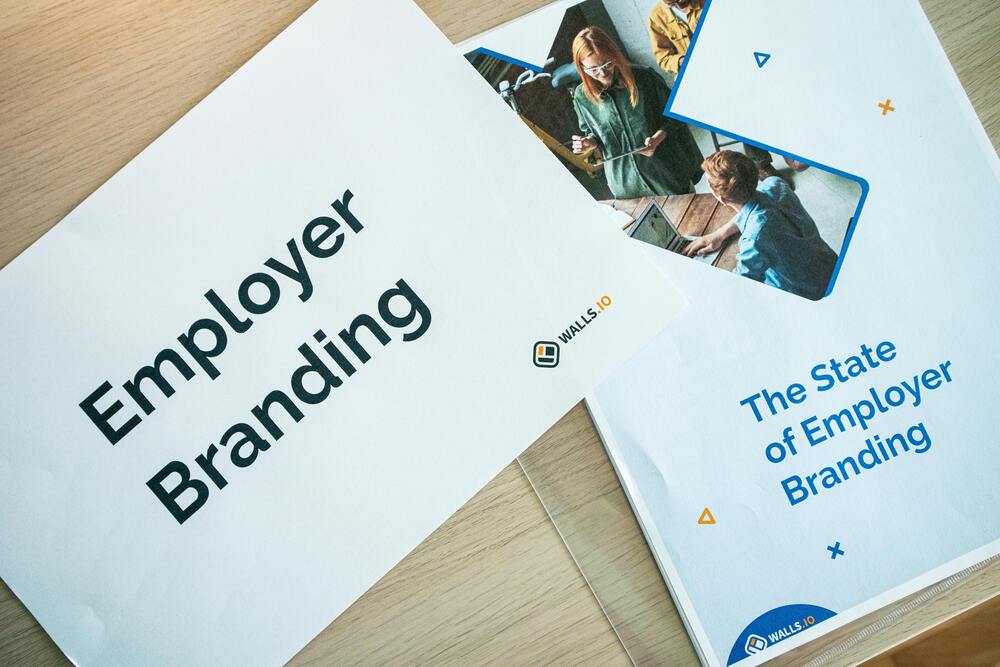- 15 Benefits of AI in Recruitment/Talent Acquisition - December 19, 2025
- Is Performative Inclusion Hurting Your Talent Pipeline? - December 9, 2025
- Is The Lack of Career Growth Losing You Valuable Hires? - November 20, 2025
The talent crunch is a pressing issue that continues to plague companies worldwide. Therefore, truly, finding the right talent with the necessary skills for their roles is a significant challenge. Job market research by Korn Ferry reveals that industries could face a global talent shortage of 8.5 million, amounting to an estimated $8.5 trillion in unrealized revenue.
Mainly, employers and hiring managers struggle with finding talent with the ideal skill sets and competencies for their roles. But, the issue is not just a matter of recruitment. It is also a large-scale organizational problem that could lead to a decline in productivity, growth, and revenue.
Addressing the delicate issue requires an analysis of your talent pipeline and the hiring process. We highlight ten ways your HR team can confidently navigate the talent crunch crisis with targeted talent acquisition and management strategies.
Tip #1 – Anticipate Skills Shortage to Overcome the Talent Crunch

A talent skills shortage can impact an organization’s productivity and put it at a competitive disadvantage. The time taken to hire could cost your company valuable opportunities in fulfilling rapidly shifting customer and industry demands.
Business leaders and hiring teams can reduce the shock of a talent shortage by monitoring and anticipating the skills and requirements for each job position and industry. So, you could assess secondary research from centralized workforce agencies.
For example, The International Labour Organization (ILO) provides a library of analytics and talent assessment tools for the purpose. These can help your hiring and recruitment teams predict skills shortages, fine-tune career development journeys, and minimize turnover. The ILO includes questionnaire formats for conducting sector analyses and guidelines for implementing employee skills surveys.
Tip #2 – Leverage Social Recruiting to Combat the Talent Crunch
Navigating the talent crunch is ultimately about skills-based hiring. Your hiring team can discover leading talent by referring to professional networking sites like LinkedIn and Indeed. These online communities provide workforce insights through industry testimonies, skills, and experiences to help you locate your next big hire.
Ongig’s Career Site Builder optimizes your job postings with user-friendly access to interactive features like social widgets that enhance your page time, which improve job seeker conversion rates. For instance, your candidates can access LinkedIn’s Easy Apply plugin for quicker job applications that populate according to a user’s profile details.
Tip #3 – Prioritize Upskilling, Cross-Skilling, and Reskilling to Overcome the Talent Crunch
Equipping current employees with relevant skills ensures they remain highly productive and confident in their roles throughout industry changes.
For the best outcome, consider shortlisting in-demand skills that complement an individual’s personal areas of improvement. So, tailored talent development initiatives can enhance learning and offer greater satisfaction in a hire’s career journey.
HR teams can optimize cross-skilling, upskilling, and reskilling by aligning training programs with employees’ career paths and goals. These personalized arrangements can open doors to engaging learning options that empower individuals with the resources. They can also provide the community support needed to obtain a skill or certification.
Studies show that on average, U.S. workers gained 8.6% in annual income through upskilling. The significant wage increase could boost employee engagement while keeping them highly skilled and qualified in their industries.
Tip #4 – Strengthen Employer Branding to Combat the Talent Crunch

Creating “a reputation that precedes you” is an efficient way for companies to connect with skilled and qualified candidates. Your hiring team can improve the organization’s reputation through a robust employee branding strategy.
For starters, you could emphasize company culture and unique employee value proposition on career sites and the company’s social media. One proven approach involves including the employer of choice award in your JDs if applicable. Renowned awards like the Great Place To Work Certification™ can help gain the trust and confidence of top-tier candidates.
Employee-generated content (EGC) can also attract talented people to your organization. For example, SAP’s John Oxenby and Trond Røvang gained a strong following as LinkedIn subject matter experts, amassing over 20,000 followers. Their popular industry-related content on technical skills and solutions contributes to their company’s authority and recognition.
Your hiring teams could leverage similar EGCs to add value and traction to their recruitment campaigns.
Tip #5 – Revisit Lessons From the Great Resignation to Avoid the Talent Crunch
The Great Resignation in the United States in 2021, following the pandemic, led employers to reevaluate the future of work. Hiring managers face the challenge of prioritizing work-life balance and other flexible employee incentives that keep employees satisfied and engaged.
Your hiring and HR team could refine the current talent acquisition strategy to diversify the talent pool by addressing the following Great Resignation-inspired questions:
- Workplace conditions – Are workplace environments psychologically safe for active listening? Does every team member have the opportunity to contribute their opinions freely without biases or repercussions?
- Employee Equity – How is the compensation breakdown across employee demographics, including gender, age, and race? Hiring teams should consult talent metrics like promotion rates of new hires, diversity in hiring, and leadership inclusivity.
- DEIB Matters – How are your company’s DEIB policies? Do members of underrepresented groups gain equal access to career opportunities? Are employee resource group leaders actively collaborating with HR and company leaders?
Tip #6 – Offer Career Growth Opportunities to Beat the Talent Crunch
Skills-focused industries are more affected by a lack of quality hires than others. These include the accounting profession and IT departments, which continuously face tech talent shortages.
Hiring parties can minimize talent gaps in these situations by offering foundational career support. For example, your company could administer internship programs that lead to confirmed employment.
Such career growth programs enable your team to engage younger generations or entry-level candidates within the talent pool. These programs enable hires to accrue industry awareness and skills through quality mentorship and on-the-job experience while they adapt to the work culture.
With that said, it is important to prioritize career growth at every stage of your employee journey. One workforce study revealed that 70% of respondents among 400 employees from three generations (Baby Boomers, Generation X, and Millennials) referred to job-related development opportunities as influences in their decision to stay in their roles.
Tip #7 – Review Hiring Criteria
Hiring managers can diversify the candidate pool and mitigate the talent crunch issue by reassessing job posting requirements. While it is vital from an organizational perspective to hone in on the best hire, it is necessary to distinguish your JD’s nice-to-have skills/experiences from the non-negotiables. For instance, is a degree needed for a hands-on role?
Overly strict hiring criteria could significantly delay your talent acquisition efforts. These would in turn lead to employee burnout since team members would double up in their roles.
Employee dissatisfaction and high turnover resulting from a disengaged workforce could quickly outstrip the cost of training and development. In many cases, it could prove cost-effective to hire less qualified individuals and offer follow-up training if required.
Tip #8 – Alternate Candidate Assessment Methods
Inherent interviewer biases exist, which could affect your quality of hire and lead to a mismatch of skills. You can avoid these biases by applying non-traditional assessment methods when determining an individual’s suitability for a role.
These methods may include work simulations that test a candidate’s technical capabilities within a realistic operational setting. Similarly, your team could conduct situational interviews that gauge a candidate’s behavioral response during a mock client conversation.
Tip #9 – Consult Talent Management Technology
Data-based platforms enable your hiring teams to accurately track and monitor talent performance, progression, and requirements. Therefore, integrating software like ATS and learning management systems (LMS) organizes your hiring team’s communications to help them stay ahead of talent crunch signals.
Essentially, employers and recruiters can use the collated data to identify skill gaps, manage employee experiences, and comply with the latest hiring standards to maintain an efficient workforce.
Tip #10 – Optimize JDs With AI
Ongig’s Text Analyzer platform uses an advanced artificial intelligence (AI) algorithm to identify biases that turn away qualified talent. These biases include racial and gender prejudices, ageism, and ableism.
Running your JDs through the Text Analyzer enables your team to efficiently eliminate the subtlest biases that often escape human detection. Text Analyzer follows up by recommending inclusive and compelling content based on leading job seeker trends.
Your team can also manually edit generated content according to the platform’s metrics, including gender neutrality and readability scores. Text Analyzer seamlessly integrates with your applicant tracking system (ATS), expediting talent acquisition.
Your hiring specialists can create a quality JD from scratch with a guided approach or directly upload existing descriptions (e.g., Word documents) to the platform.
With Text Analyzer at your side, you can boost application rates to overcome the talent crunch. The reliability of AI helps your company consistently attract skilled talent, including passive candidates, who make up 70% of the workforce. The Analyzer’s systematic structure also standardizes your JD library so you can repeat winning recruitment campaigns at scale.
The Impact of the Talent Crunch on Company Culture and Morale

The ongoing talent gap in many industries has a significant impact on company culture and employee morale. In recent years, as the demand for skilled workers has risen, particularly in the tech industry, businesses face hiring challenges that affect their existing workforce.
Strain on Current Employees
When there’s a shortage of talent, the work doesn’t just disappear—it often gets pushed onto existing staff. So, this leads to employees feeling overworked, especially in fields with a tech talent shortage like cybersecurity professionals and data scientists. A recent survey shows that employees in tech companies and other sectors like health care and financial services are experiencing higher levels of stress due to open roles that remain unfilled.
Productivity Declines
One of the biggest challenges of the current talent shortage is its effect on productivity. When there aren’t enough skilled people to fill job openings, productivity can suffer. Smaller companies often feel the pinch more than larger corporations, as they struggle to compete with higher salaries and greater flexibility offered by bigger firms. This is especially true for industries like the semiconductor industry and Wall Street Journal companies, where high-demand roles remain vacant for extended periods.
Negative Effects on Company Culture
The global economy is facing a global human talent shortage, which forces businesses to operate with fewer people. As a result, employees may feel overwhelmed, and workplace morale can take a hit. The rising demand for tech roles like cybersecurity specialists and data scientists can create friction among teams, leading to a strained company culture.
In some cases, the pressure of managing open positions can even cause tension between departments. So, employees may feel isolated or unsupported when they see new people coming in but not staying long enough to relieve the workload.
Younger Workers and Demographic Shifts
Demographic changes, such as an aging population, are one of the key factors behind the talent deficit. There are fewer younger people entering the workforce, especially in industries like financial services and technology sector jobs. So, this makes it harder for companies to find additional skilled workers to fill the talent gap.
In response, businesses are turning to workforce development programs and community colleges to help address skills development in younger workers. However, this solution takes time, and the ongoing talent shortage is still a top challenge for many employers.
The Role of Flexibility
One area that companies are exploring to ease the burden on employees is offering greater flexibility. Remote workers have become more common, and this shift can help relieve some of the pressure caused by the labor market shortage. However, for industries like the tech industry, the tech talent shortage and high demand for skilled professionals remain persistent problems that flexibility alone can’t solve.
Closing Thoughts
The global talent crunch will likely persist in the immediate future as companies deal with the modern workforce’s increasingly high demands (e.g., compliance and emerging technology).
There is no foolproof approach to preventing skill shortage challenges altogether. However, through personalized employee training and development, seamless applications, and inclusive hiring, your company would continue to fill talent gaps without disruption and undeterred.
Why I Wrote This?
Ongig is advancing inclusive and diverse talent acquisition through the power of AI. Our Text Analyzer platform automates JD vetting for optimal results, eliminating biases while enhancing readability to entice and convert the most qualified candidates. So, Request a demo with the Ongig team today to attract top talent regardless of the most difficult job market conditions.
Shout-Outs:
- Korn Ferry – The $8.5 Trillion Talent Shortage
- International Labor Organization
- LinkedIn – Future-Proof Your Career: A Guide to Reskilling and Upskilling in a Changing Job Market
- Trond Røvang – LinkedIn
- LinkedIn – John Oxenby
- Great Place To Work – The global authority on workplace culture
- By Chuck Leddy, ADP – 4 Alternative Interview Techniques That Work
- By Lane Gillespie, Bankrate – Upskilling statistics: How online learning can increase your salary by thousands per year
- Mind-blowing Statistics that Prove the Value of Employee Training and Development
- By Edward Segal, Forbes – How Companies Can Respond To The Rising Tide Of The Great Resignation
